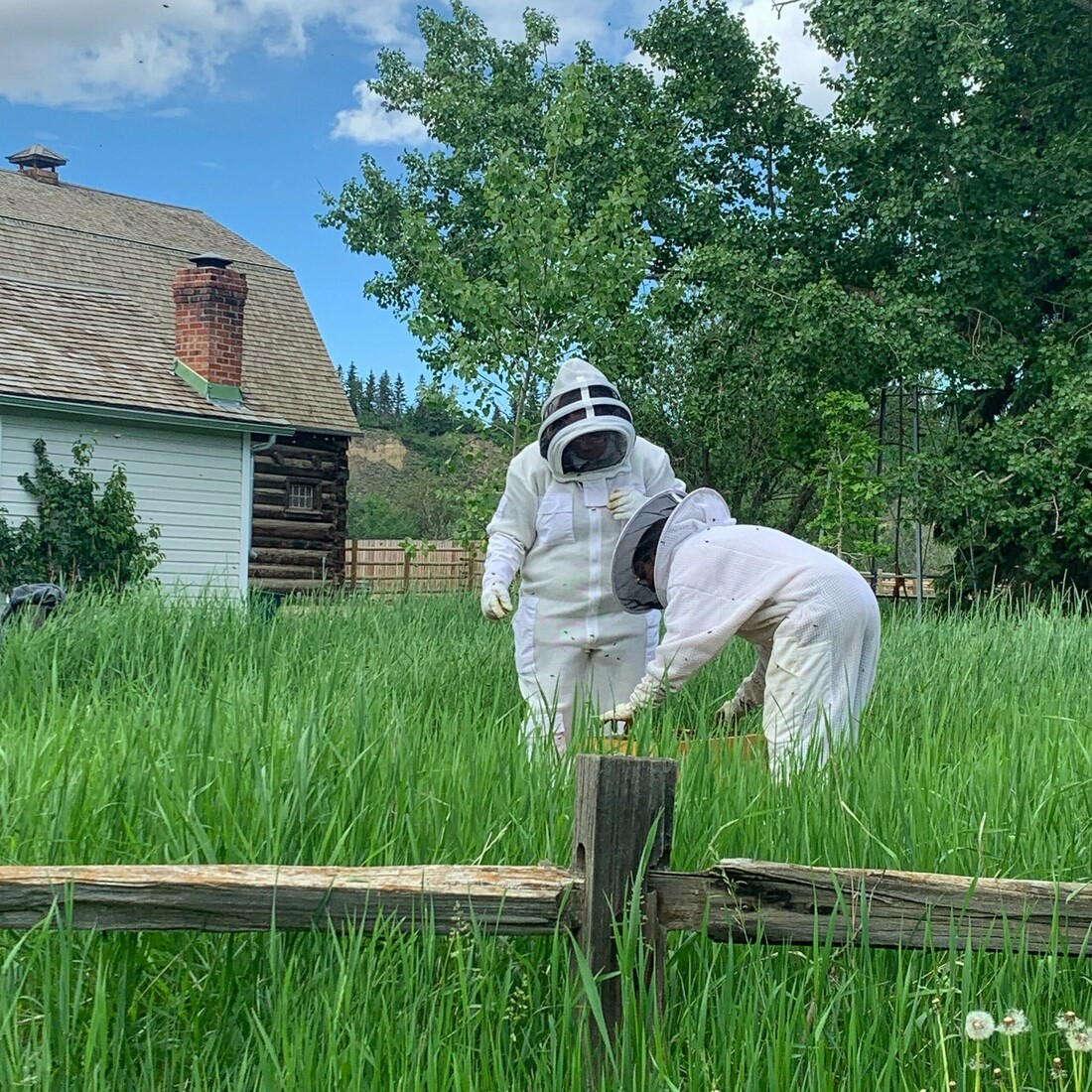
Buzzing Bees at Fort Edmonton Park
What’s the BUZZ at Fort Edmonton Park?
Have you all heard the buuuuzzzzz? Fort Edmonton Park officially has new bee residents!
The Fort Edmonton Park Operations Team is thrilled to welcome our very own hive of thousands of busy little creators to our site, located in the southwest corner of Mellon Field on 1920 Street. We have partnered with YEG Honeycomb to bring an active hive to Fort Edmonton Park.
The YEG Honeycomb initiative is a 3-year pilot project, supported by the City of Edmonton, highlighting the benefits of urban beekeeping and urban history by combining both into a unique opportunity that demonstrates the value of bringing bees into the urban landscape.
YEG Honeycomb places and manages hives at historic locations throughout Edmonton, bringing new interest to these sites and inspiring meaningful dialogue speaking to sustainability, preservation, and connection. They currently have hives at the following locations: Alberta Aviation Museum, Old Man Creek Nursery, Alberta Hospital Edmonton, Chancery Hall, Magrath Mansion, Grierson Centre, and now Fort Edmonton Park!
Beehives support our Operations Team’s commitment to environmental sustainability, as the bees will assist in the flower, fruit, and vegetable production at Fort Edmonton Park. In addition, bees are still in decline, having hives supports the Edmonton community as a whole.
Beehives also support our Hospitality Team, in supporting local food-related businesses, and the local production of honeycomb. Honeycomb is quickly becoming a sought-after food product. Some of the local suppliers we are working on partnering with are using honeycomb in their restaurants, such as Mewley's and Chartier. This is an exciting endeavor for Fort Edmonton Park!
Fun Facts About the Bees:
- Bees are friendly by nature, their primary focus is collecting nectar and pollen and pollinating plants within the fly radius.
- Watching the hive from the fence line, the Mellon Farm swing and yard pose zero threat to the public or staff.
- Honey bees live in large communities called colonies.
- Each hive has one Queen that lays all the eggs which will spawn the hive's next generation of bees. If the Queen dies, worker bees will create a new queen by selecting a young larva and feeding it a special food called "royal jelly".
- The Queen produces approximately 2,500 eggs a day
- Fort Edmonton Park bees will actively be producing local honeycomb; this hive is not set up to produce liquid honey.
- Bees have 5 eyes and 6 legs.
- Male bees in the hive are called drones and they do not have a stinger.
- Worker bees are females, they do all the different tasks needed to operate and maintain the hive, these are typically the ones bees you see outside the hive.
- An average hive can hold up to 50,000 bees.
- Bees fly at a speed of approximately 25km per hour and beat their wings approximately 200 times per second.
- Bees are friendly and do not go out and look to attack people or animals. They are out looking for nectar/pollen. Bee stings typically only happen when they are provoked or feel they need to protect their hive.
- Bees communicate through a series of dance moves.
- The honey bee is the only insect that produces food eaten by man.
- A honey bee can fly for up to six miles, and as fast as 15 miles per second, it would have to fly around 90,000 miles - three times around the globe - to make one pound of honey.
- It takes one ounce of honey to fuel a bee's flight around the world.
- A bee visits 50 to 100 flowers during a collection trip.
Discover the bees at Fort Edmonton Park. Book Now!
Learn more:
https://www.healthline.com/nutrition/raw-honeycomb#uses
https://www.foodnetwork.com/fn-dish/recipes/2011/08/how-to-use-honeycomb